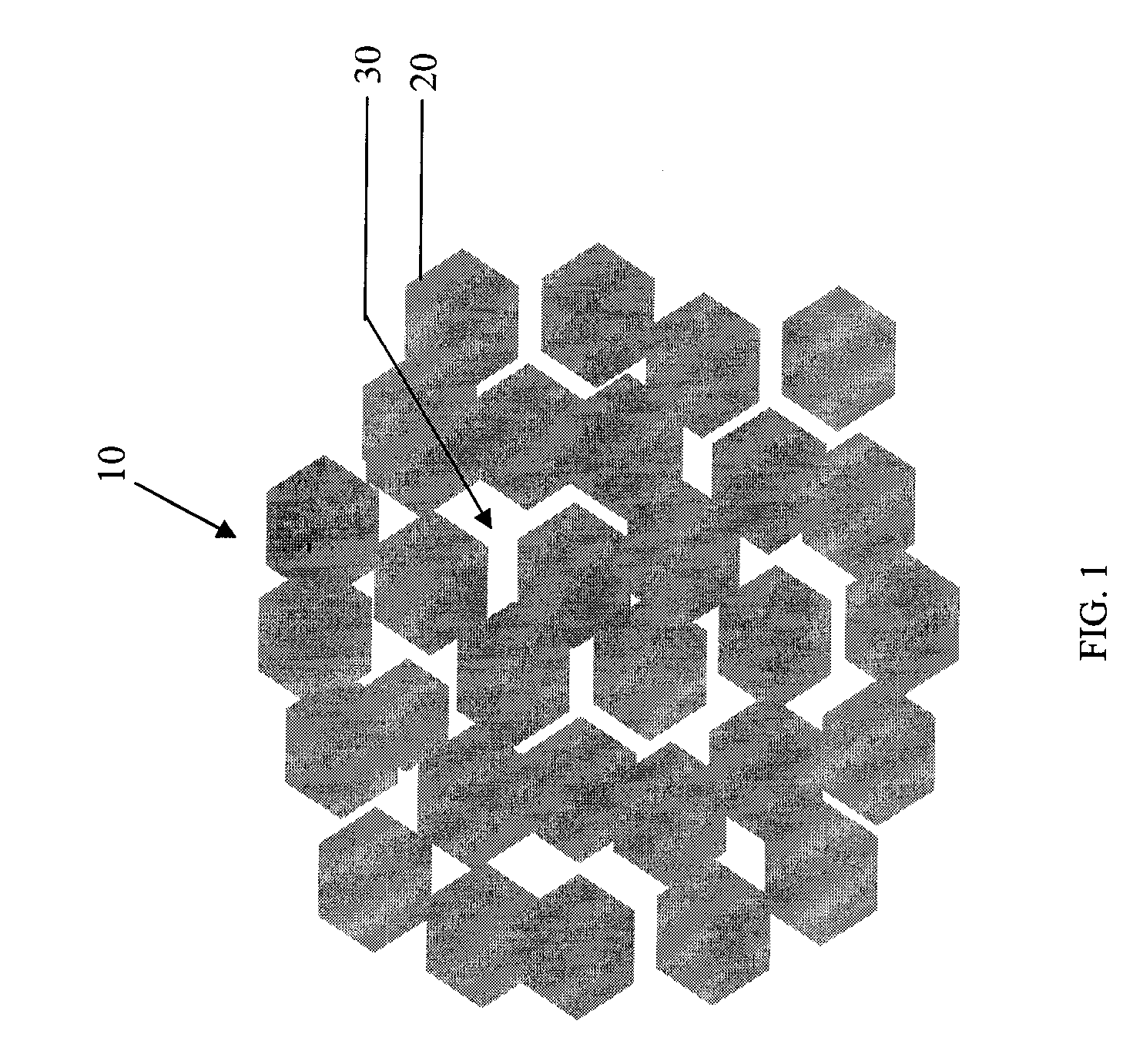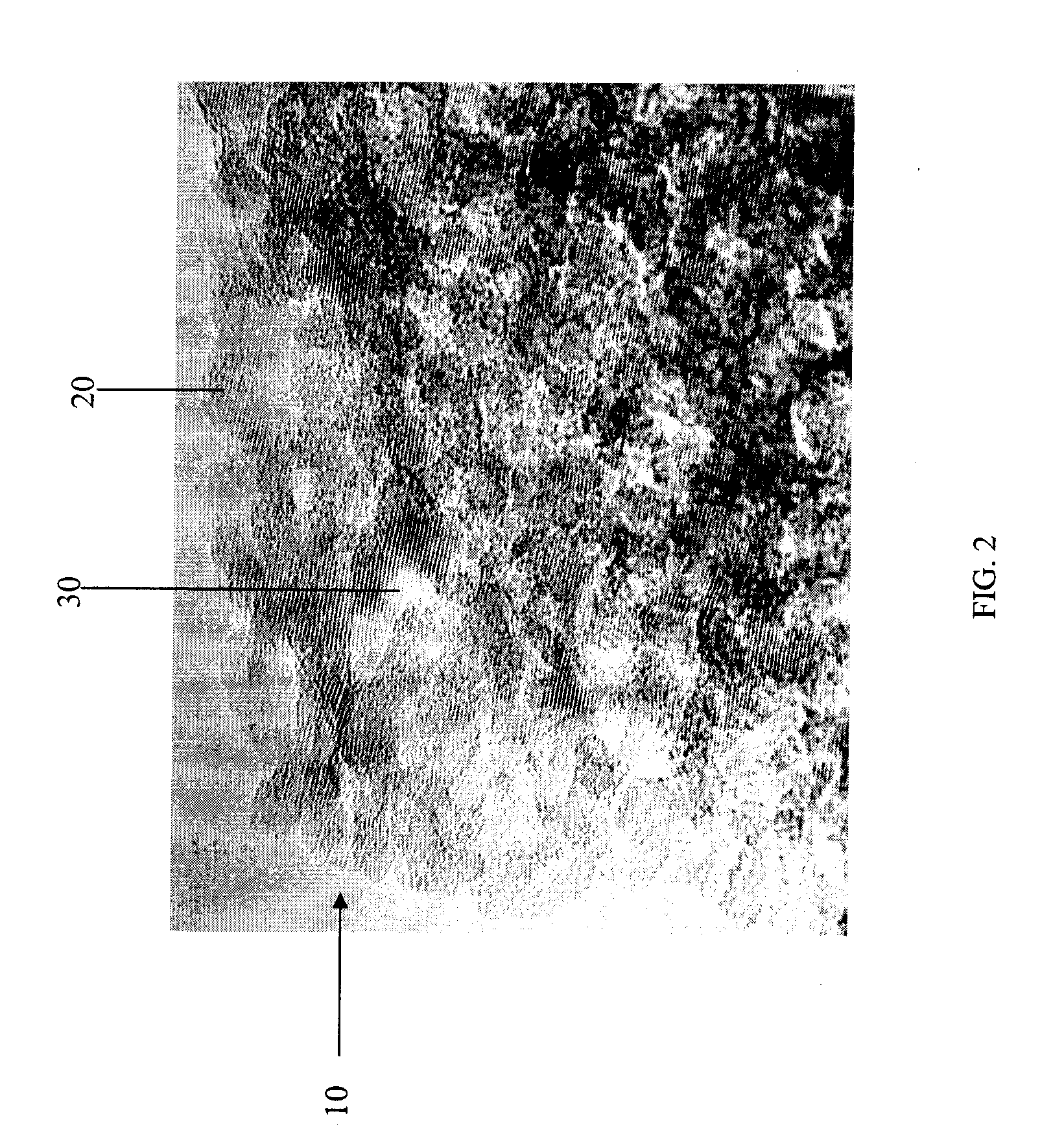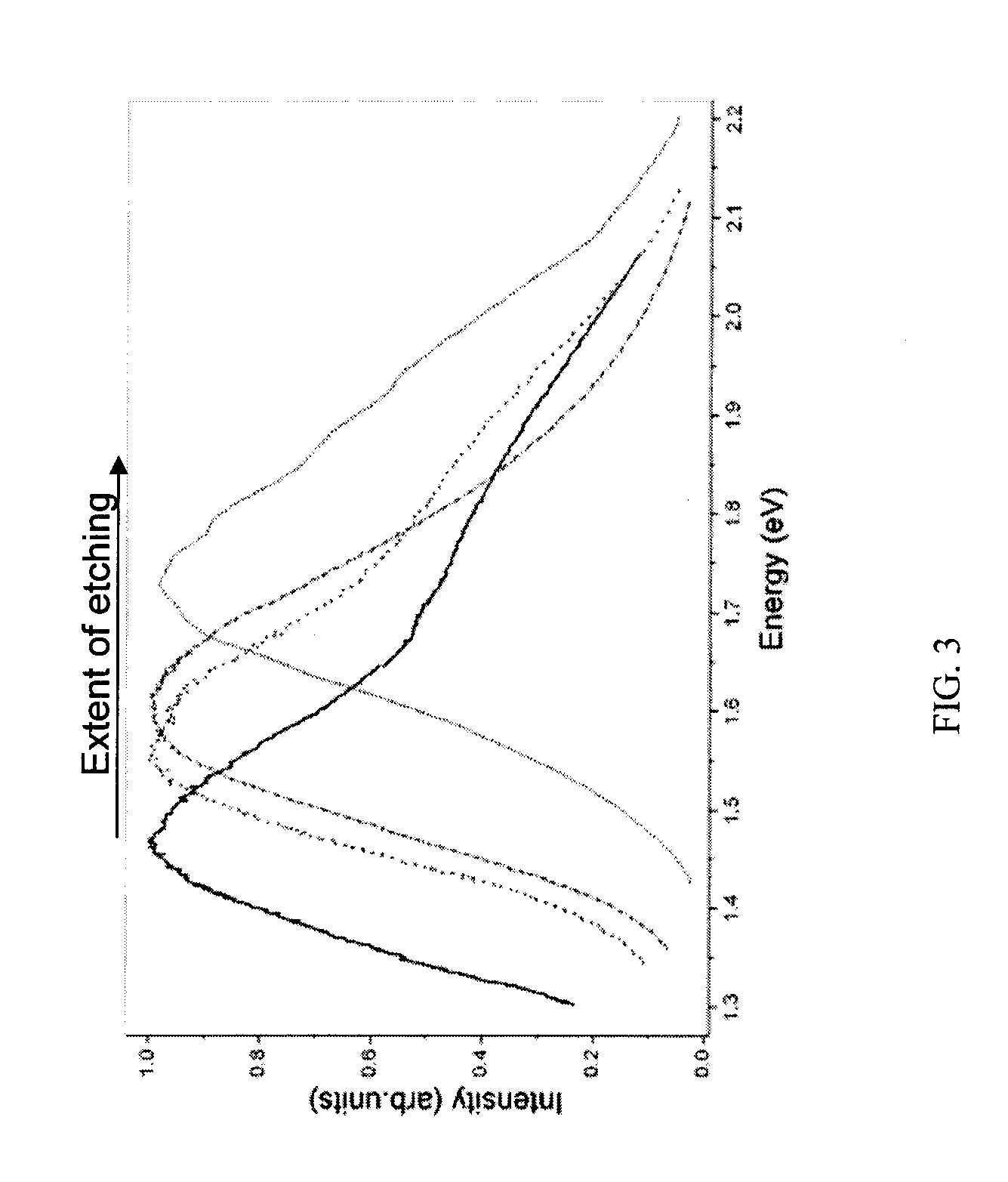Silicon Nanosponge Particles
a technology of silicon nano-sponge particles and nano-sponge particles, which is applied in the field of porous silicon, can solve the problems of difficult scaling up of this process, many drawbacks and limitations of the process, and the possibility of cracking in the silicon structur
- Summary
- Abstract
- Description
- Claims
- Application Information
AI Technical Summary
Benefits of technology
Problems solved by technology
Method used
Image
Examples
example
[0033] Silicon nanosponge particles were prepared from 2E, 4E and 4F metallurgical grade silicon powders from Vesta Ceramics, AB in Sweden. The metallurgical grade silicon powders were etched with 750 ml of a 48% HF acid with 1000 ml of water in a propylene bath set at a temperature of 27° C. 100 grams of metallurgical grade silicon powder of the selected grade was added to form a mixture, which was mixed thoroughly. An approximately 25% solution was prepared from a 65% HNO3 reagent. Approximately 400 ml of the 25% HNO3 solution was added in steps. The reaction product was checked for photoluminescence with an ultraviolet light. A bright orange emission indicated the formation of nanocrystals within the silicon particles. The reaction was terminated. The powder was collected and dried under vacuum or in air at 70° C. for 24 hours. The Brunauer-Emmet-Teller (BET) surface area was obtained by nitrogen gas adsorption measurements in a Micromeretics ASAP 2010 gas adsorption analyzer. Sa...
PUM
| Property | Measurement | Unit |
|---|---|---|
| Temperature | aaaaa | aaaaa |
| Temperature | aaaaa | aaaaa |
| Temperature | aaaaa | aaaaa |
Abstract
Description
Claims
Application Information
 Login to View More
Login to View More - R&D
- Intellectual Property
- Life Sciences
- Materials
- Tech Scout
- Unparalleled Data Quality
- Higher Quality Content
- 60% Fewer Hallucinations
Browse by: Latest US Patents, China's latest patents, Technical Efficacy Thesaurus, Application Domain, Technology Topic, Popular Technical Reports.
© 2025 PatSnap. All rights reserved.Legal|Privacy policy|Modern Slavery Act Transparency Statement|Sitemap|About US| Contact US: help@patsnap.com



